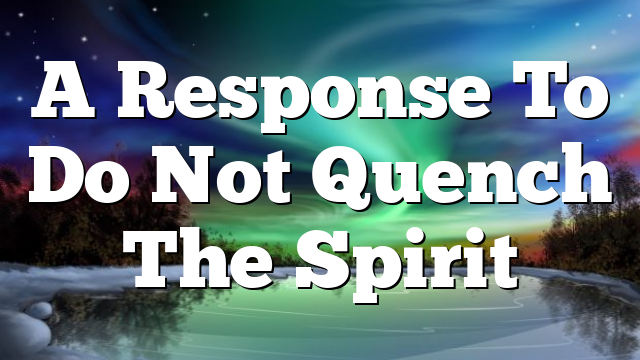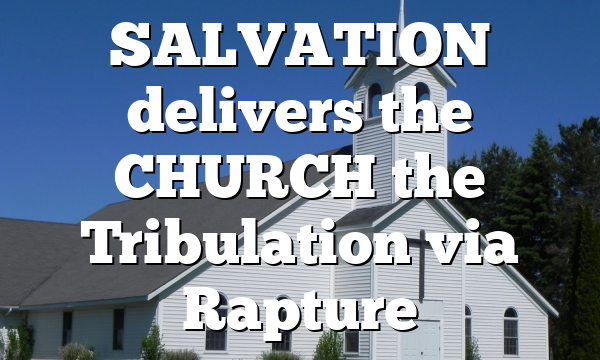Click to join the conversation with over 500,000 Pentecostal believers and scholars
Click to get our FREE MOBILE APP and stay connected
| PentecostalTheology.com



Pneuma 41 (2019) 503–506
A Response to “Do Not Quench the Spirit” Charisms in the Life and Mission of the Church—Report of the Sixth Phase of the International Catholic-Pentecostal Dialogue (2011–2015)
Simon Chan
Trinity Theological College, Singapore schan@ttc.edu.sg
Compared to the previous dialogues, this one is perhaps the most construc- tive to date. It shows more convergence than differences between Catholics and Classical Pentecostals. And where differences exist, they are mostly com- plementary and therefore mutually enriching rather than contradictory. This is not surprising if we believe that the same Spirit has bestowed the same gifts on both Catholics and Pentecostals, resulting in a deeply shared spiritual experi- ence. Both Catholics and Pentecostals are paying close attention to the biblical texts bearing on the subject (§§15–20). It is also heartening to note that pen- tecostal participants came from a broader spectrum of churches, including the Global South. The presence of Global South representatives is critical since in the world of primal religions the need for discerning the spirits is particularly acute.
The following are important areas of agreement that are worth reiterating: 1. The need to recognize the place of suffering (§13). In much of Pente-
costalism’s short history, an over-realized eschatology has been its defin-
ing characteristic—and its bane. A theology of glory has tended to over-
shadow the theology of the cross. This is even more so today among many
Third Wavers.
2. Both agree that the charisms include institutional gifts, but here there is a
difference in tendency and emphasis: Catholics tend to rely more on the
institutional whereas Pentecostals tend to rely more on the charismatic.
But their coming together help both traditions to recognize the need to
maintain a healthy tension between the two (§27).
3. One of the most important points of agreement concerns discernment.
Both agree that a lack of discernment is at the root of much of the tension
within the body of Christ and is a contributing factor to “manipulative
and dishonest practices” (§29). This is probably an oblique reference to
what has been going on in recent years among independent charismatics,
© koninklijke brill nv, leiden, 2019 | doi:10.1163/15700747-04103031
1
504
ecumenical reflections
especially the Third Wavers and those under the New Apostolic Reforma-
tion. It sends a clear message to these fringe groups who sensationalize
the charisms based on alleged “revelation” and spurious exegesis (grave-
sucking/soaking based on the story of Elisha’s bones). The practice of
grave-sucking may be a crude parody of the Catholic belief and practices
involving religious relics; if so, it may open up new areas for future dia-
logues.
It is also becoming clearer why the dialogues focus on three gifts—healing, prophecy, and discernment. Healing and prophecy are two of the most com- monly abused gifts among today’s charismatics. For example, some pente- costal-charismatics use prophecy as a means for personal guidance. In primal religious contexts, it has become a Christian version of fortune-telling. Healing prayers are sometimes done without considering the need for pastoral care of those who are not healed. As for discernment, it is sorely needed to root out the wolves in sheep’s clothing in our midst.
Historically, Catholics have been more consistent in their view of prophecy, whereas Protestants have not been so. The Reformers are cited for failing to understand properly the charism of prophecy by equating it with preaching (§§39–42).
1 Areas of Complementarity
One significant achievement in the dialogues is that where differences exist, both sides also recognize that they are more complementary than contradic- tory.
1. Catholics and Pentecostals differ in their understanding of the founda-
tion of the charisms. For Catholics, charisms are founded on baptism and
confirmation, whereas many Pentecostals see baptism in the Spirit as the
gateway to the charisms (§10). It should be noted, however, that in recent
years Pentecostals are rediscovering the importance of the sacraments,
especially Holy Communion, in early pentecostal practice and worship
(for example, Daniel Tomberlin, Chris Green, and Jonathan Black). While
a theology of baptism in the Spirit vis-à-vis the sacraments is still a work
in progress among pentecostal scholars, there is no doubt that in the
future we will be seeing greater convergence between Catholics and Pen-
tecostals in this and other related areas. A recent work by Daniel Castelo
has argued that Pentecostalism is best understood as a mystical tradition. 2. Catholics maintain a close link between healing and sanctity (§§62, 63),
whereas Pentecostals have not made that link as explicitly. Charisms are
Pneuma 41 (2019) 503–506
2
ecumenical reflections
505
best exercised where the life of the person is deeply transformed by grace
(§100). “The exercise of charisms, when accompanied by holiness of life,
glorifies God and empowers the spread of the gospel to the ends of the
earth” (§106; cf. Acts 1:8). Particularly important is this common affirma-
tion:
The charism of healing is not necessarily a sign of holiness (Mt 7:22–
23; Acts 3:12). On the other hand, holiness opens a person more fully to
the Holy Spirit and his gifts. The charism of healing is not intended to
be exercised in isolation but in communion with the Church. (§71)
Pentecostals need to give fuller attention to the link between healing,
holiness, and ecclesial life. There is too much in pentecostal-charismatic
circles where the gullible are easily taken in by the sensational claims of
independent preachers whose words and deeds are anything but holy.
Further, the ecclesial context of healing (§66) is also something that Pen-
tecostals need to give more emphasis to and not let it be hijacked by
independent preachers.
3. Both agree that discernment is the key to the proper exercise of the other
charisms (§77). But they differ in the way it is practiced. Catholics under-
stand discernment more broadly (“natural” discernment that comes from
growing maturity), whereas Pentecostals have traditionally understood
discernment as a special charism (§§81, 82). But ordinary discernment
is recognized by Pentecostals although they may not use the phrase as
such (§83). Pentecostals acknowledge certain inherent weaknesses in
their practice of discernment, such as “anticipating or seeking an imme-
diate manifestation of the presence of the Holy Spirit in their midst.”
They acknowledge “the need for better teaching on the subject as well
as corporate discipline within the Pentecostal community, and the con-
tinuing need to discern those who are particularly trusted to make dis-
cerning judgments” (§85); in short, for Pentecostals, discernment needs
to be more deeply rooted in the church’s institutional life and author-
ity structure. Both Catholics and Pentecostals agree that discernment is
sharpened as Christians grow in spiritual maturity (§89).
The importance of corporate discernment is further elaborated in §94. In the Catholic tradition, the sensus fidei or sensus fidelium constitutes a critical part of the discerning process which involves the hierarchy recognizing the Spirit in the faithful (§95). Pentecostals, lacking a doctrine of the sensus fidelium, tend to end up relying on individuals with “a word from the Lord.” However, the pen- tecostal practice is not without historical precedents: the example of the Desert Fathers who sometimes spoke charismatic words of wisdom comes readily to mind. This is another instance in which differences in emphasis create aware-
Pneuma 41 (2019) 503–506
3
506
ecumenical reflections
ness of complementarity from which a more comprehensive theology could emerge. Pentecostals acknowledge the need for ecclesial accountability which they can learn from Catholics; Catholics can learn from Pentecostals that at times an intuitive discernment is needed (§98).
2 Some Concluding Observations
The joint statement is especially important for Pentecostals as the pentecostal- charismatic movement reaches a critical juncture.The pentecostal world today is highly fragmented. There are deep fissures and internal contradictions, he- retical fringe groups and pastors of independent megachurches with little or no accountability to anyone but themselves. It is a world that is as much driven by the market economy as any other businesses. More and more sensational prac- tices (whose shelf life tends to get shorter and shorter) are being vigorously promoted as new revelations. Novelty has become the hallmark of charismatic superstars.
The joint statement could not have come at a more critical moment. It offers a concise and sound theology on the charisms of prophecy, healing, and discernment. From the pentecostal perspective, it could be said to represent “mainstream Pentecostalism.” It sets the right trajectory for any further dis- cussion on key pentecostal concerns. There is tremendous potential in this joint statement. It represents a broad consensus on the best in pentecostal and Catholic teaching on the gifts of the Holy Spirit. As such, it could well serve as a kind of status confessionis for mainstream Pentecostalism against the rapid proliferation of charismatic aberrations, especially in primal religious contexts.
Pneuma 41 (2019) 503–506
4


